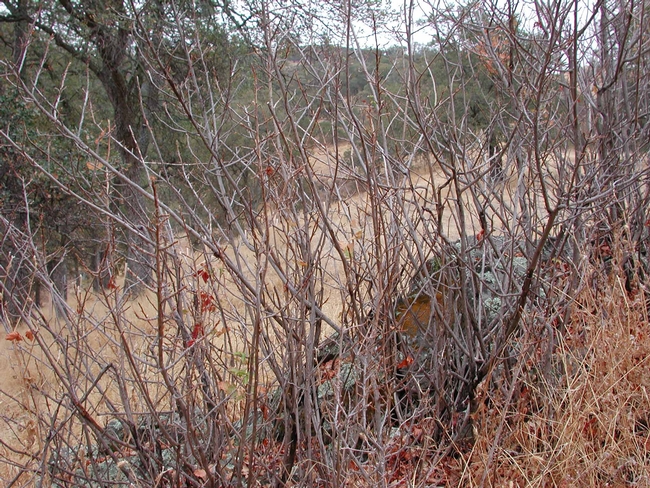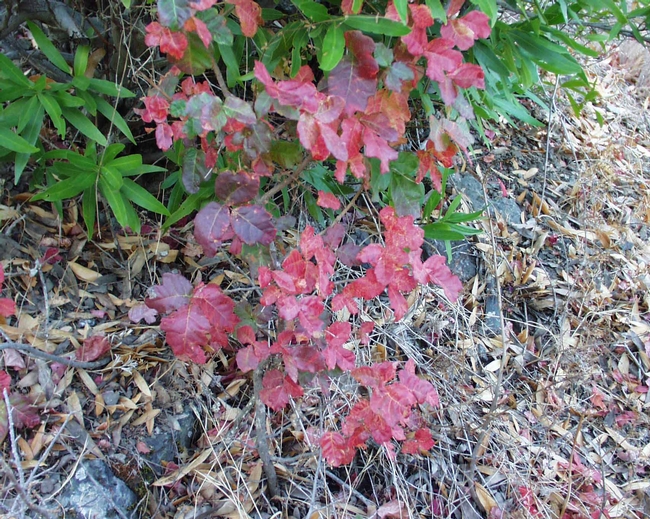
Campers and hikers are often warned to avoid poison oak in summer by looking out for green plants with glossy leaflets of three. However, as weather cools, the appearance of the plant changes, making it more difficult to identify.
In fall, poison oak leaves turn attractive shades of orange and red, which then drop off in winter. The bare branches still contain allergens capable of causing a rash in sensitive individuals who brush up against it. In some cases, people may unknowingly use the plant's branches for firewood or to roast marshmallows, exposing themselves to the poisonous oils via smoke particle inhalation.
Next time you plan a trip outdoors, make sure to read the UC IPM Pest Notes: Poison Oak for information on how to avoid exposure, and steps you can take to reduce skin irritation if you do come into contact with it.
Attached Images:
